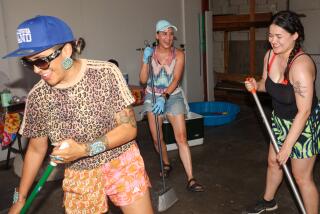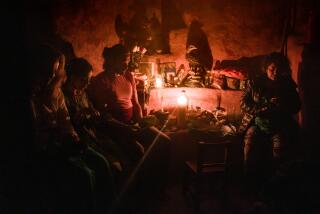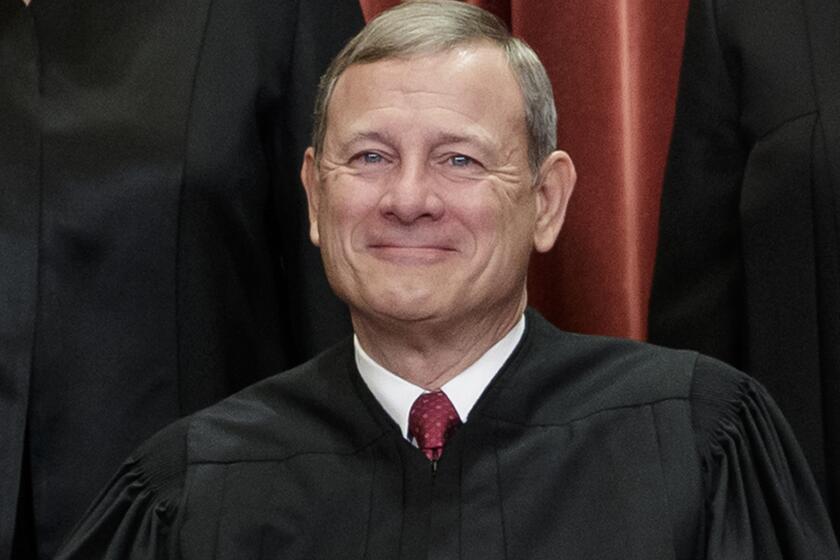Choctaw Culture Used to Help Addicts
- Share via
TALIHINA, Okla. — Every morning begins with meditation and wisps of burning sage at Chi Hullo Li, a rural haven for Choctaw women recovering from drug and alcohol addiction.
The center’s name translates as, “I care for you,” and its counselors strive to show that is true. They help restore female addicts’ sobriety and self-esteem by immersing them in their heritage.
Totem poles decorate the playroom for clients’ children. Lecturers talk about culture and Indian statistics. Therapy incorporates bead artwork and flutes.
“We’re giving these women back their lives, helping them understand they are worthwhile,” said project director Deanna Chancellor. “We basically teach them to deal with success, where they have always dealt with failure.”
The women spend six months at the Choctaw Nation facility and an additional six months in follow-up supervision. The center has room for 12 clients at a time.
One woman said the payoff was what she learned about patience, responsibility and self-respect. She figured she would be jailed or dead from drug abuse if she had not entered the program.
“I think it’s a great place,” said the woman, who gave her name only as Tammy. “They’re caring. They take time to listen, to make you see a different way.”
The Choctaw Nation launched the project last year after winning a $3.1-million grant from the Center for Substance Abuse Treatment of the U.S. Department of Health and Human Services. It opened in the tribe’s former hospitality house outside Talihina.
Young children may live with their mothers in the dorms. Older children attend school in town.
Dr. Eva Marie Smith, medical advisor for the Indian Health Service’s alcoholism and substance abuse branch in Albuquerque, N.M., said Chi Hullo Li was unusual for including clients’ children and for spanning an entire year.
Smith said she did not know specifics about Chi Hullo Li. She said in general, though, that culture and life experiences play important roles in recovery for American Indian women.
“The general population is better beginning to understand there is a spiritual part of the addiction process,” she said. “Therefore, the treatment involves a spiritual awakening or reawakening.”
American Indians and Alaska natives are more likely than people in the U.S. population as a whole to die from alcoholism and drugs, according to the Indian Health Service.
A 1996 agency publication says alcoholism killed Indians and Alaska natives at a rate of 38.4 per 100,000 people from 1991-1993. The rate for all races in the United States was 6.8.
Data in the publication show drug-related deaths for Indians and Alaska natives during that three-year period occurred at a rate of 4.6 per 100,000 people, compared to 4.3 for all races.
Chi Hullo Li accepts women from across Oklahoma who pass physical and psychological screenings. Sixteen of the facility’s 17 employees are women.
Chancellor said many who seek help at Chi Hullo Li are single mothers hooked on alcohol, marijuana or cocaine. Many also are victims of domestic violence.
“These women do not trust,” Chancellor said. “They’ve been hurt. They’ve been burned so many times.”
Martha Burnside, assistant director and senior substance abuse counselor, said the women attend classes on topics such as AIDS, anger, depression and assertive skills. A parenting instructor visits regularly.
Dr. Deborah Jones-Saumpty, clinical coordinator, said American Indian women of the 1990s must overcome an identity crisis fueled by narrow stereotypes involving papooses, fry bread and buckskins.
“We have to teach them to find who they are,” she said.
Directors at Chi Hullo Li expect to find another funding source before their five-year grant expires.
Although her program accepts only a small clientele, Chancellor said, it works well and heals entire families by helping women back onto their feet.
“They may not ever be the mother society wants them to be,” she said. “But we want them to be a better mom than when they came here.”
More to Read
Sign up for Essential California
The most important California stories and recommendations in your inbox every morning.
You may occasionally receive promotional content from the Los Angeles Times.










